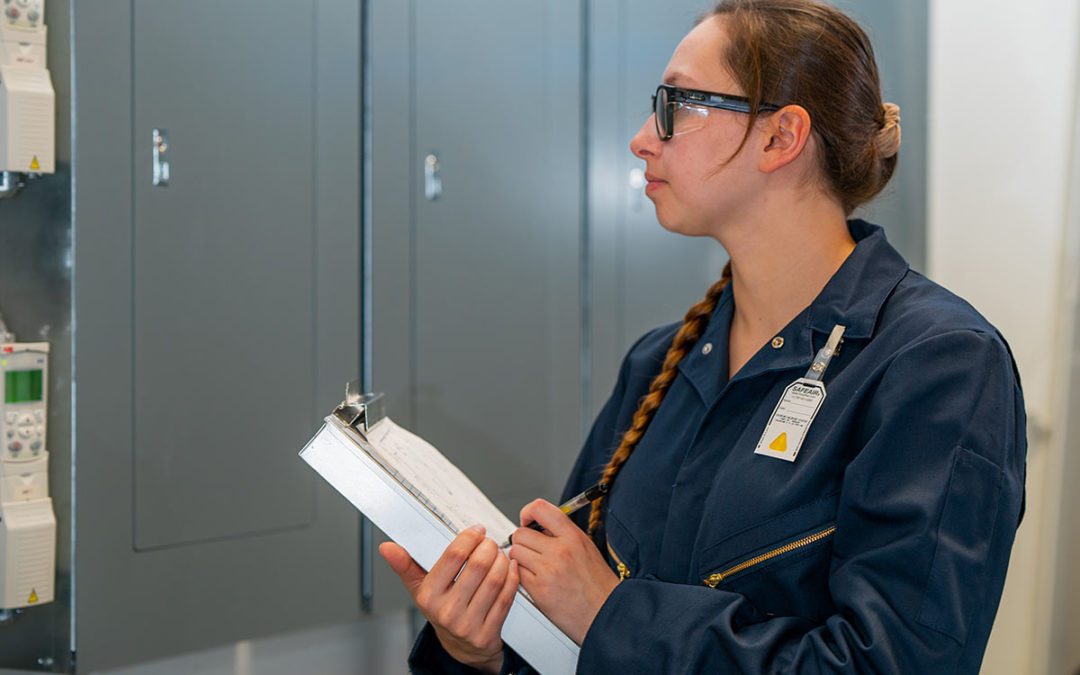Chemical safety regulations and regulatory compliance requirements continue to evolve—and for safety managers, compliance officers, and industrial hygienists, keeping up can feel like chasing a moving target.
Between OSHA requirements and NIOSH-recommended exposure limits, regulatory expectations have grown increasingly detailed and interconnected. While these standards are designed to keep workers safe, they can also present challenges for teams managing day-to-day operations, especially when it comes to workplace chemical detection.
In this post, we’ll break down the most relevant regulatory frameworks, highlight practical monitoring strategies, and examine how tools—like passive chemical detection badges—can support compliance and worker safety.
Why Regulatory Compliance Is Becoming More Demanding
Workplace chemical exposure is one of the most tightly regulated areas of occupational safety. As research advances and workplace environments change, so do the standards. At the same time, there is increasing pressure to:
- Stay current with regulatory updates
- Monitor exposure accurately
- Document safety procedures and training
The cost of non-compliance can be steep:
- Fines from OSHA violations
- Increased risk of workplace illness or injury
- Shutdowns, lawsuits, or reputational damage
Yet many organizations lack clear, scalable tools to monitor chemical exposure or demonstrate compliance.
The Two Agencies You Need to Know: OSHA and NIOSH
Two key organizations drive workplace chemical safety regulations in the U.S.:
OSHA: Enforcer of Workplace Safety Standards
The Occupational Safety and Health Administration (OSHA) establishes and enforces legal standards for workplace safety, including chemical exposure. One of its most important regulations is the Hazard Communication Standard (HCS), which requires:
- Proper labeling and identification of hazardous chemicals
- Clear, accessible Safety Data Sheets (SDS)
- Employee training on chemical risks
- Documentation and monitoring of potential exposures
OSHA also sets Permissible Exposure Limits (PELs)—maximum levels of chemical exposure allowed during a typical work shift. However, many PELs are outdated or under review, which leads many safety professionals to turn to NIOSH for additional guidance.
NIOSH: Setting the Bar for Safe Exposure
The National Institute for Occupational Safety and Health (NIOSH) is a research agency that provides science-backed recommendations for workplace safety. While NIOSH doesn’t enforce regulations, its guidance shapes best practices across industries.
Key contributions from NIOSH include:
- Recommended Exposure Limits (RELs) for hazardous chemicals—often more protective than OSHA’s PELs
- Extensive toxicology research, exposure studies, and risk assessments
- Guidelines for sampling methods and protective measures
Many employers adopt NIOSH RELs when OSHA PELs are lacking or insufficient, especially in high-risk settings.
Why Monitoring Is the Compliance Blind Spot
Even with strong safety policies and training programs in place, many workplaces still struggle with exposure monitoring. Knowing what chemicals are on-site is only half the equation—understanding how much workers are exposed to, and when, is equally critical.
This is where passive detection tools come in.
What Passive Detectors Offer
Passive chemical detectors—such as colorimetric badges—are designed to:
- Detect specific chemicals over a work shift
- Visually indicate when exposure thresholds have been reached
- Be worn by workers or placed in task-specific locations
- Offer immediate, on-the-spot awareness without power, calibration, or specialized equipment
They complement formal monitoring programs and provide data that supports OSHA and NIOSH documentation standards.
Building a Culture of Safety Through Simplicity
Regulatory compliance is about more than passing inspections—it’s about creating a workplace where safety is taken seriously and tools are accessible to everyone.
When monitoring tools are easy to use and interpret:
- Workers are more likely to engage in safety practices
- Supervisors can respond to risks in real time
- Documentation becomes a natural part of day-to-day operations
This builds a strong safety culture rooted in transparency and continuous improvement.
A Note on Morphix Technologies
For organizations looking for simple, effective monitoring solutions, passive detection badges—like SafeAir® badges from Morphix Technologies—offer a practical option. Our badges are used in a variety of settings to detect airborne hazards like formaldehyde, hydrogen sulfide, chlorine, and others. They require no calibration, are easy to deploy, and support both OSHA compliance and NIOSH-aligned best practices.
Final Thoughts
Staying compliant in today’s regulatory landscape means staying proactive. As OSHA and NIOSH continue to refine their standards, safety professionals need tools that make monitoring easier—not more complicated.
Passive chemical detectors won’t solve every problem—but they do provide immediate, actionable insights that support both legal compliance and worker health.
If you’re managing a chemical safety program, ask yourself: Are your monitoring tools giving you the clarity you need?
Sometimes, the simplest tools make the biggest difference.
